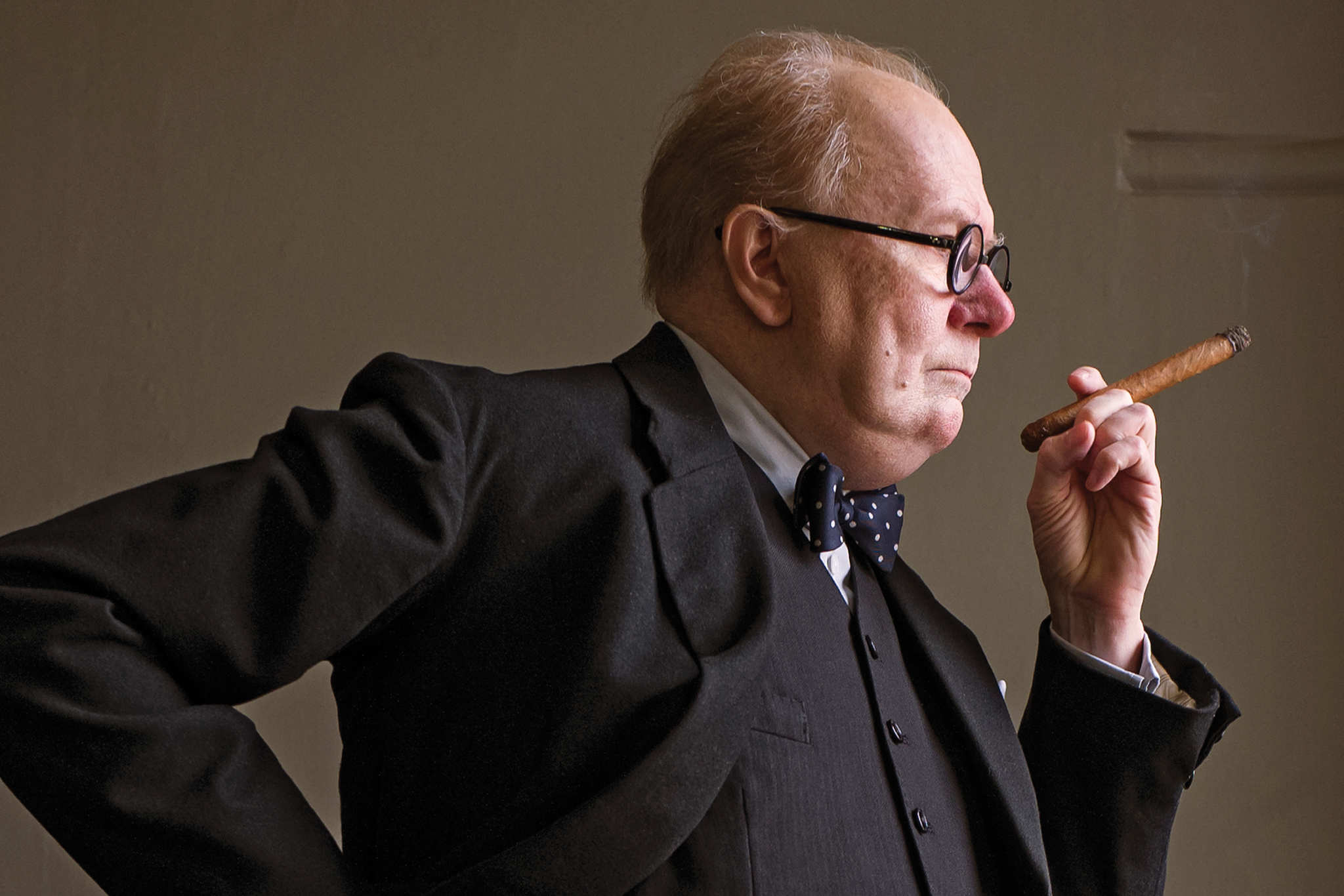
At last night’s Academy Awards, the Oscar for best makeup and hairstyling went to Kazuhiro Tsuji for his work on The Darkest Hour. It’s an honor that very easily could have eluded him: In 2011, Tsuji quit the film industry, turning instead to art and dedicating himself to making larger-than-life, hyperrealistic sculptures of famous artists and other notable figures. Then Gary Oldman came calling.
Oldman was in talks to play Winston Churchill in The Darkest Hour, but he knew that his own acting chops were only part of the battle. (Last night’s awards also saw Oldman take home the best actor award.) He had previously become close to Tsuji while they were working on Tim Burton’s 2001 remake of The Planet of the Apes, and there was no one else the British actor trusted to do the job.
Kazuhiro Tsuji, Lucy Sibbick, and David Malinowski, winners of the Best Makeup Oscar for The Darkest Hour, pose in the press room during the 90th Annual Academy Awards. Photo courtesy of Alberto E. Rodriguez/Getty Images.
Tsuji—whose resume includes Norbit (2011), Men in Black (1997), and The Curious Case of Benjamin Button (2008)—had been burned in the past, with an allegedly traumatizing on-set experience working with a temperamental Jim Carrey on How the Grinch Stole Christmas (2000). The stress of that experiment sent him to therapy and Tsuji later dropped out of the industry to become a full-time sculptor.
“My aim is to sculpt portraits that go beyond capturing a likeness. I create these heads from the inside out, bringing to life the appearance of inner thought and emotion as I layer the silicone,” Tsuji wrote in an artist statement about his work, which is done at eight times life scale. “The stillness and detail allow for close examination of each pore with a level of scrutiny not even permitted to lovers. The sculptures permit an impossibly close shared moment with the celebrated.”
Kazuhiro Tsuji, Frida Kahlo. Courtesy of Kazuhiro Tsuji.
Turning Oldman into Churchill was a challenge that took six months of makeup testing and more than three hours in the chair each day. “They don’t look like each other at all,” Tsuji told New York Magazine. “The proportions of the face, the placement of the eyes and nose and mouth, if they are close to each other it’s easy to make him look like Churchill. But it’s almost totally opposite. Churchill’s eyes are buggy and farther apart, Gary’s eyes are deep-set and close to each other.”
Tsuji struck a delicate balance, creating prosthetics for Oldman’s cheeks, jowls, neck, nose, and chin, but leaving the actor’s eyes, forehead, and mouth alone to allow his expressions to shine through. Churchill’s wispy hair was a fragile wig, made partially from expensive baby hair, which had to be replaced every ten days, and his blotchy pink skin tone was replicated with makeup.
Kazuhiro Tsuji applying prosthetics on Gary Oldman to transform the actor into Winston Churchill. Photo by Jack English, courtesy of Focus Features.
Coming back to Hollywood, Tsuji set new boundaries for himself. “I realized that there’s a way to work on a film job without stressing myself out,” he said. “As long as I do the test makeup and design and everything works right, I don’t have to be on set.” Perhaps, with that in mind, he’ll be able to split his time between the art and film worlds going forward, embracing both careers.
Other art world nominees did not fair as well as Tsuji, who shared his award with David Malinowski and Lucy Sibbick. Loving Vincent, the world’s first oil painted film, lost to Pixar’s Coco. Meanwhile, Bryan Fogel’s Icarus, an expose on doping in Russian athletics, beat out directing duo JR and Agnès Varda’s Faces Places in the best documentary category.